For years I have been listening and watching how modern and contemporary artists admire each other, how they explain with chosen words what I cannot see and feel. An inner voice always told me that something was wrong. I kept asking myself how can educated people find beauty in something that has never been accepted as beautiful before?
My inner dilemmas slowly cleared up when I began to put together a complete picture of the decadent society in which I live. In a decadent society, there can be no original or great art. Simply put, if society falls apart, then artistic expression follows that process. We see it as the disintegration of all forms in figurative art, and in music we feel it as the disappearance of melody and harmony. Now I’ve become calmer, and while I’m watching some art exhibitions or monuments on TV, I’m starting to be amused by the verbal acrobatics in describing something as beautiful, which I can’t see or feel. I allow the possibility that the horizons of my imagination and intellect are not wide enough, but I am comforted by the fact that such an assessment should then be extended to artistic taste from antiquity to the present. The endless verbalization and media imposition of impersonal art looks like a contemporary version of Andersen’s fairy tale about the emperor’s new clothes. Here, the expressionless and asymmetrical geometric shapes are presented as the emperor’s beautiful new clothes to be admired by all. Andersen wrote for children, and now we have adults who search for beauty where there is none in long shows on radio and TV. At one time, the German philosopher Immanuel Kant tried to determine the limits of human speculation. He compared the metaphysical takeoff to a pigeon that climbs up and flies more and more easily, only to find out in one moment that it cannot fly at all in airless space. Today, artists and architects have gone far from reality in their abstractions, but they lack a Kant-like authority in philosophy to bring them back down to earth. This contemporary aesthetic metaphysics is comprehensively supported by the media. There is no media affirmation of the figurative and classical ideal in architecture and art. On the contrary, the media and artists’ guilds popularize auctions of contemporary works of art, where the prices of individual works artificially skyrocket. A modern Andersen should not write fairy tales, he should only take examples that are around in abundance.
Question for those who don’t know Zagreb: you look around this building and you don’t know anything about its purpose. Write what you see in the pictures attached below?
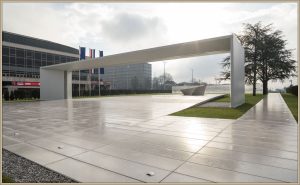
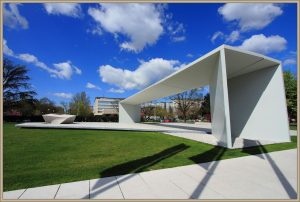

My impressions are as follows: The question is whether the mentioned location is suitable for erecting the Monument to the Homeland? We live in a country where June 25 is not a national holiday (Independence Day), so it should not be surprising that there is no agreement even about where the most important national monument should be built. It seems that this solution will not be accepted either. If by any chance Meštrović was resurrected, even his authority would not be enough for politicians to say: “Here, that’s it.” The concrete construction resembles a triumphal arch/canopy. Unlike similar buildings, and in accordance with contemporary minimalist trends, its surfaces are completely smooth and uniformly painted in white. There is no trace of a relief anywhere that would remind of the purpose of the monument. The alleged triumphal arch is thus a bare concrete reinforced structure and God forbid if it was covered with granite or marble, that would be too traditional, even worse, classicist. There must be no old-fashioned columns or colonnades. The fire comes out of a stone that is cut and curved so that someone doesn’t find a link to something from the real world. I felt this feeling of a bare and cold concrete structure for the first time when entering a huge newly opened building called the Museum of Contemporary Art in Zagreb (read: Museum of Decadent Art). The bareness of the canopy/arch is not accidental, but a rule. When we look at old buildings in European cities, we can notice that the owners always tried to decorate at least the facades of their buildings to the best of their ability. Tastes should not be discussed, but never in the history of European architecture has it occurred to wealthy investors to order buildings that have no decorations and that will not attract the attention of any observer. It could be said that this supranational and impersonal architecture merely follows the dominant egalitarian trends after the Second World War. Until the use of reinforced concrete constructions was known, architects had to respect certain rules of statics and symmetry. Now nothing stands in the way of their creative eros. How come they never asked themselves why nowhere in the history of European nations did anyone think of building such an “arch of glory”? Those abstract creatives are strange, everything is allowed to them and they have extensive verbal explanations for everything. Without verbalization, an uninformed observer would not be able to understand the full depth of the idea – contemporary esotericism. The “glorious arch” imagined in this way could stand in any country. He is supranational, even astral, one big nothing.
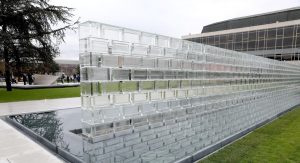
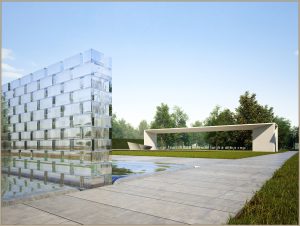
At first glance, it looks like a wall made of equal ice/glass elements. For the author, it is the Wall of Pain and symbolizes all the victims who fell for Croatian freedom. For another observer, it is just a semi-transparent wall without any particular meaning. It is an abstraction that only the initiated can understand. A simple question arises: what is the point of looking for glass as a building material in the construction of a monument of this type?
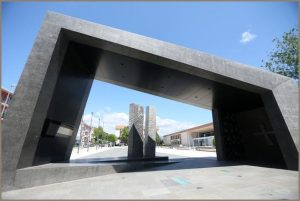

The “Storm of 95” monument in Knin1 also has a triumphal arch motif. In contrast to all previous arches, these is nothing curved here, the elements of Euclidean geometry at an angle dominate. It seems that triumphal arches must not have symmetry, everything must be broken somehow irregularly, disproportionately. The author used a stone, under the triumphal arch the names of the dead and missing soldiers were written. From this one can immediately conclude about the purpose of the monument. But the white panels embedded in the black stone under the arch remain obscure to the casual observer. The meaning of the two rough stone boulders next to the triumphal arch is even more unclear. In the best tradition of abstraction, any meaning can be attributed to them. The author forgets that it is not the duty of the observer to discover what he imagined, but on the contrary, he should produce such forms and characters that arouse in most people feelings appropriate to the historical events in that area.

There were other offers for the “Storm of 95” monument.
Hotel in the area of the barracks on Črnomerac

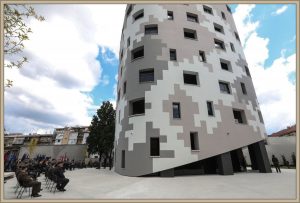
It is obvious that the architect used the graphic solution of the camouflage uniform as an inspiration for the decoration of the facade, and it is a beautiful solution. When it comes to the construction of the building, it is impossible to say what his inspiration was. Maybe it was an ugly trunk of some rotten tree, or maybe it was just a desire to make something that completely deviates from the architecture of the surrounding buildings from Austrian times. All these buildings are protected as monuments and their restoration costs a lot, but these restrictions do not apply to “modern and contemporary”. They can play with irregular forms indefinitely at the expense of the state. It is important to do something provocative, something that stands out from the surroundings and that passers-by will have to comment on. This kind of building can be too expensive and ugly, but it is important to be “modern”, to have a lot of reinforced concrete and then everything passes.
The Monument to the Unknown Hero, Serbia and the Altar of the Homeland, Croatia
As a contrast, it is interesting to see how Meštrović2 resolved the position and shape of a similar monument on Avala (hill 511 m above sea level, 1938) near Belgrade (Monument to the Unknown Hero).

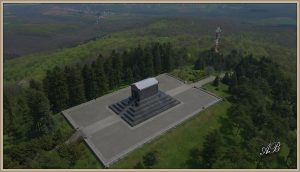
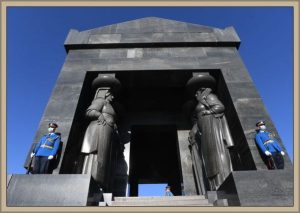

That’s how Meštrović did it!
I do not know if Meštrović determined the place on the hill of Avala, but it is certain that he accepted it and made an appropriate solution at the same time. This monument does not require a long explanation from those in the know. With its appearance, it leaves an impression of monumentality, seriousness and weight. There is no glass, and the ancient caryatids are dressed in the folk costumes of the country at that time. Sculptors like Meštrović are not born often and it would be a mistake to copy him, but his work can serve as an inspiration to at least try to be original. The artist who tries this must first believe in himself and be ready not to blindly follow impersonal, abstract artistic and architectural trends. All contemporary architects should ask themselves a simple question: why don’t their creations attract tourists like the old ones?
For the sake of comparison, it is good to look at the location and the monument solution for the Altar of the Homeland at Medvedgrad near Zagreb.
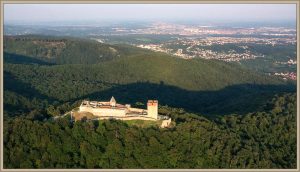
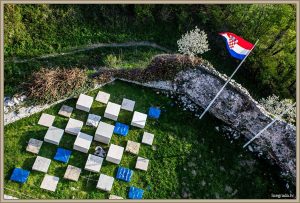
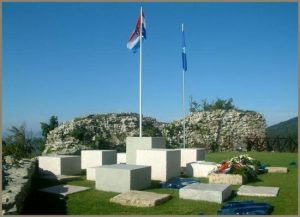
The location of the monument on Avala is irresistibly reminiscent of the choice of Medvedgrad for the Altar of the Homeland. Here we already have a deviation from the abstract canon in the recognizable elements of the Croatian coat of arms and the restored old Medvedgrad as a whole. Unfortunately, the author used glass in the construction of the coat of arms here as well, which was a mistake. The glass elements soon cracked or someone broke them. The building material must ensure durability even in extraordinary circumstances. For example, Meštrović’s monument withstood the shelling of the Red Army in 1944. Their gunners initially thought it was a German fortification on Avala.
The first planned slanting obelisk
In the beginning, it was an ugly building on Marshal Tito Square in Zagreb, and everyone agreed that it was ugly,
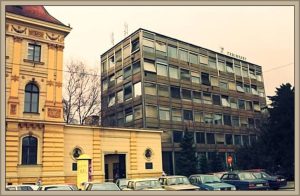
and then it became “modern and contemporary” on the renamed Republic Square.

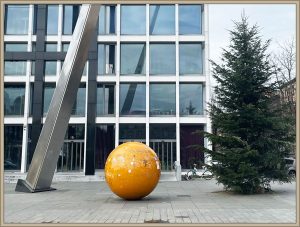
The surrounding of one of the most beautiful square in the city could not sway the architect to recreate a new/old building that has nothing to do with the architecture of the square. There is also a frozen sunbeam falling on the ground from the direction of the north? It is also the only inclined structure in the large square. If the sun is grounded next to it, where does that ray come from? Furthermore, where did another grounded Sun come from nearby in the same city (Bogovićeva Street)? These modern planners are strange, they question cosmic realities, or maybe it’s about mundane psychological problems.

We also have our own Medjugorje in Zagreb.3 Pushing the first obelisk and the new/old building into the space of Republic Square in Zagreb is a common practice of contemporary architects. It is a way to draw attention with provocation and contrast. We have the same case in Paris, where the contemporary and modern pushed their metal-glass pyramids into the courtyard of the former palace of the French kings, today the Louvre Museum. The management of the museum had to make new underground approaches to the museum due to the large number of visitors. The solution of an American-Chinese architect who is unusually fond of pyramids and uses the opportunity to install them everywhere was accepted. In this case, he placed three above-ground pyramids opposite a Renaissance palace in Paris! Who knows, maybe he was in a creative ecstasy for a moment in connection with the Egyptian pharaohs who have been lying for a long time at the famous site near Cairo?
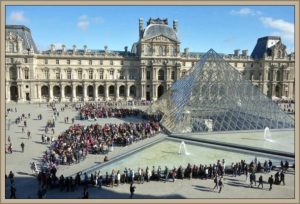

Since the Chinese-American likes pyramids a lot, he decided to build two more, but underground, in the same locality. Of those two, one is turned upside down, and the other smaller one miraculously remained “normal” – the pinnacle of contemporary playing with shapes thanks to stainless steel that can withstand anything.
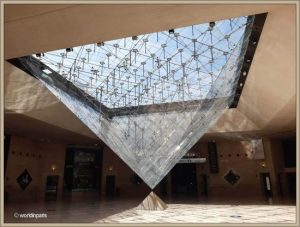
As usual, the media reported that the citizens initially did not accept the teleportation of the pyramids from Egypt, but later they gradually realized that it was the right one and that they belonged in the courtyard of the Renaissance royal palace.

Bad can always be worse, sometimes superlatives can have several degrees. The fate of this building of the German museum clearly shows this.The above picture represents the military museum in Dresden, which was built in the the seventies of the XIX. century. The old neoclassical lady has survived many changes, including Allied bombing in February 1945.
The German authorities at the beginning of the XXI. century decided to put the building back into the function of a museum. Since they could not find the right one in all of Germany, they brought in an architect from the USA. This man accepted the job and (2011.) thoroughly modernized the old building by symbolically driving a large metal wedge into the old structure. His reasoning is as follows: “The openness and transparency of the new facade, representing the openness of a democratic society, contrasts with the rigidity of the existing building, which represents the severity of the authoritarian past”. This is surely a true example of the destructiveness, arrogance and lack of imagination of contemporary architects. The architect was completely clear, the neoclassical building is rigid and evokes negative emotions for him. A strange connection between architecture and political struggle. Perhaps the Parthenon is too rigid for such people.
It seems that “modern bombers” were, for the neoclassical lady, more destructive than the Allied bombers in 1945.
Tradition says that the inhabitants of Graz in Austria seriously resented the gods. The angry gods unanimously decreed the punishment unanimously that would cause long-term damage to the city and they chose a modern architect as the executor without doubting his abilitty. He did an excellent job by creating an object that resembles a giant fat parasite that has nested in a completely alien urban environment and threatens to destroy it. All these architectural exhibitions basically have to provoke attention and thus create the impression that this is about something that is really worth paying attention to. Let’s imagine how this green monster would look in an open space where there is no contrast or in the environment of similar objects.
The American city of Cleveland was hit by an even bigger accident than in the previous case. In Austria, the green glutton just crawled between the buildings, now “normal” buildings are made just to highlight their destruction. The new roof structure completely destroys the old one, and what remains of the classical skeleton is distorted under the power of the malignant tumor that has already destroyed the roof and is now spreading its metastases below. Everything here is asymmetrical and curved, as if someone had issued an order that it had to be that way. The visual impression is clear, but what is behind it in the minds of the architects is a little more difficult to explain. It is even more difficult to explain how the city authorities agree to finance such expensive projects that completely deviate from the surroundings. Like other people, architects watch where the wind blows, how their professors teach them and who wins prestigious awards. Herd psychology encompasses all levels of society and only a few can escape its influence. This conceptual solution for a building in the same city in the 19th century would have been declared insane.
The role of politicians when it comes to monuments
Politicians have a great responsibility in the choice of architectural monument solutions. They are obliged to determine the basic characteristics that they want to see in the tender offer. If they do not have enough imagination, then they must choose advisers who do and listen to their opinion. If they are not satisfied with the advice, they can abandon the construction – it is better to do nothing than to do something ugly and expensive. There have already been suggestions in the media about temporarily stopping the construction of similar buildings. The customer should choose the goods to buy and not allow the merchant to impose modern and contemporary as the only solution. A lot has changed in Zagreb since Austrian times. At that time, it would have been unthinkable for the mayor to give his consent to the expensive architectural and artistic solutions that are being used today.
Modern and contemporary European museums
It’s as if they’re competing to build the ugliest museum. God forbid some kind of symmetry or pillars, that would not be “contemporary and modern”. Reliefs and statues would be too local and traditional signs that would spoil the beauty of pure abstraction that is without time and space. It can mean anything and nothing. For modern architects, the medieval scholastics are little babies, the latter spread their conceptual cobwebs in an area that is by its nature abstract (theology). It never occurred to them to impose abstractions in the depiction of characters from the Bible or in the construction of sacred buildings. Well, there are no such creatures as half-bird-half-human angels, but it is nice to see in the depictions what is a bird’s wings and what is a human body. When it comes to contemporary architecture, the main “culprits” for the whole commotion are the various metals and reinforced concrete available everywhere, which enable abstract play with forms that become meaningless. The Museum of Contemporary Art in Bilbao can be located in any other part of the world. It is tragic that today there is no media owner who would host directors, artists, academics who would say: “The emperor is naked – that’s enough”!
The Museum of Contemporary Art in Bilbao can be located in any other part of the world. This is where playing with shapes reached its limits. Andersen’s famous fairy tale is no longer a fairy tale, it has become reality. I highly recommend readers who have read it a long time ago to refresh their memory, and those who are young to read it. I guarantee intellectual satisfaction to both. When one day homo europeus dies out, some new inhabitants of these areas will be scratching their heads for a long time wondering what these buildings were for. It will be more difficult for them to decipher it than for the Frenchman Champollion the Egyptian hieroglyphics. The Frenchman had in front of him graphemes from which he read a certain sense, which is the logic of the Egyptian and Greek languages. There is no such key here, the nonsense cannot be deciphered.
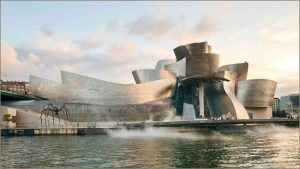
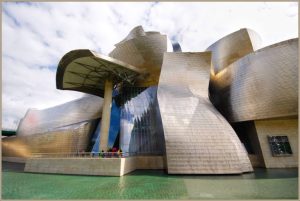
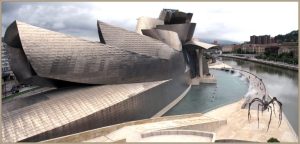
Due to its exceptional “beauty”, the Guggenheim Museum in Bilbao has become a role model and guide for many contemporary architects. They looked for creative inspiration in this building and thus in many countries more and more beautiful replicas were created.
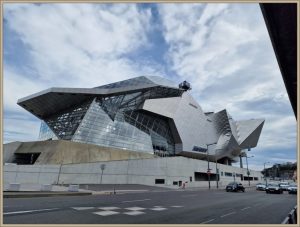
What a beauty! Every time I look at her, I see something new, something I haven’t seen before.
It would be nice to listen to the explanations given by the tour guides to the visitors while viewing these magnificent buildings. It is not an easy task for guides. They have to spin the conceptual web so that it sounds very professional to ordinary people and thus force the observers to keep the awkward questions to themselves. In any case, it would be easier for them to explain Hegel’s philosophy than this chaos.
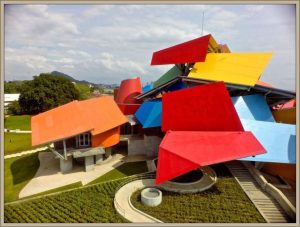
And only these playful roofs in bright colors – it is important to be contemporary.
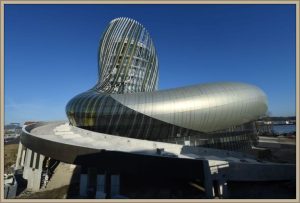
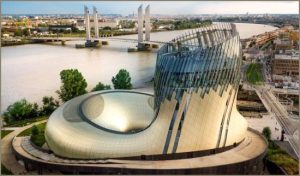
At first glance, this object resembles a snail’s house or something that, on this occasion, is not convenient to describe. Thus, it will remain unclear for history what inspired the architect, but it is certain that no one in Bordeaux had, until then, thought of building something similar. That must have filled the architect with pride, it is important to make a contrast and then it is certain that he will emerge from anonymity through the media. I assume that the awarding of prestigious awards followed
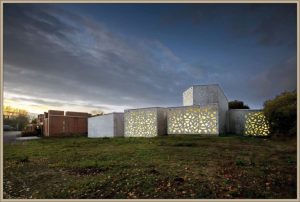
This is such a mysterious building, you won’t go wrong with the explanation because it’s not there anyway. Maybe it is hidden deep in the creative imagination of the architect, but we don’t see it…
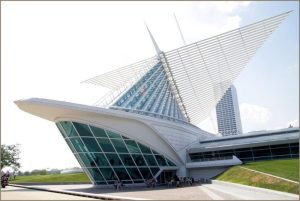
Look at this fluttering play with glass, reinforced concrete and steel. I’m impatiently waiting for an explanation from the architect or someone who knows the secret, so that I can understand what “the artist wanted to say”.
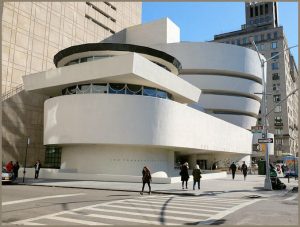
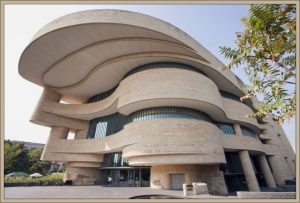
The museum is dedicated to American Indians…
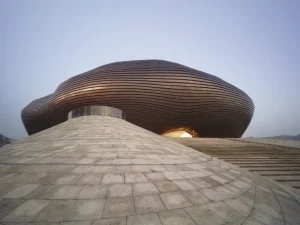
Perhaps an American robot on Mars has discovered a never-before-seen object…
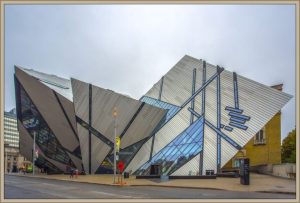
This structure is not definitely on Mars, but it is so mysterious that it could be placed on a planet even further away from the Sun.
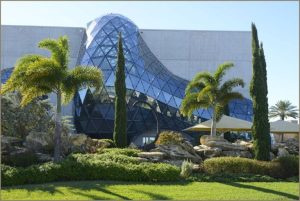
A monster is lurking in a beautiful park!

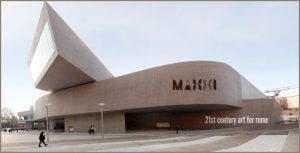

Reinforced concrete is again to blame for everything…
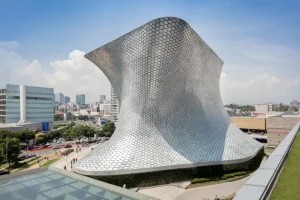
No one has yet determined where this building is, but that doesn’t matter. She is so impersonal that she can stand anywhere, and preferably nowhere. We can temporarily call it Unidentified Grounded Object (UGO).
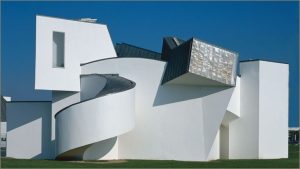
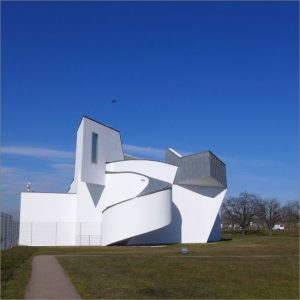
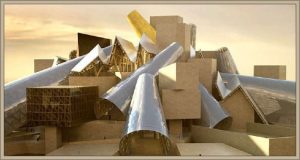
I dare not say anything. I stand mute in front of this beauty…
***
On this occasion, I invite readers to participate in the voluntary addition of images of the “most beautiful” examples of contemporary architecture. It can be a lot of fun.
- In 1995, the Croatian army entered the city of Knin, which was the main stronghold of the rebel Serbs. [↩]
- Ivan Meštrović, 1883 – 1962., prominent Croatian sculptor. [↩]
- Medjugorje is a place in Bosnia and Herzegovina. It is visited by many pilgrims who believe that the Mother of God appears there. [↩]
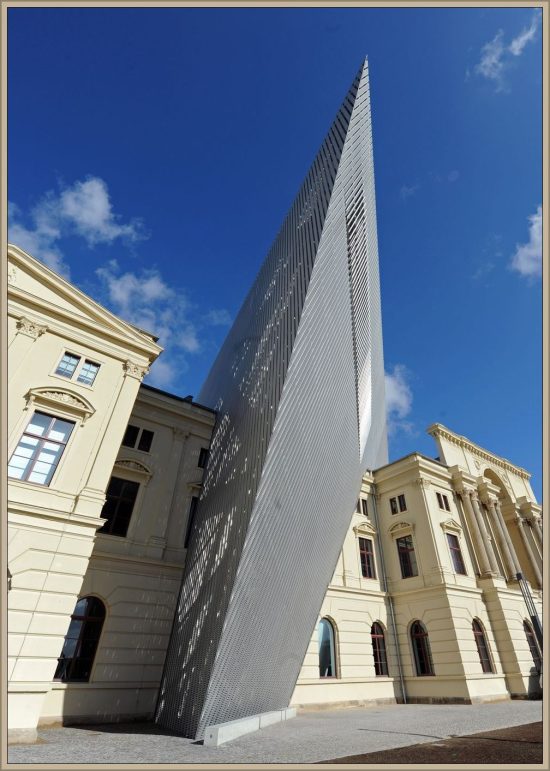

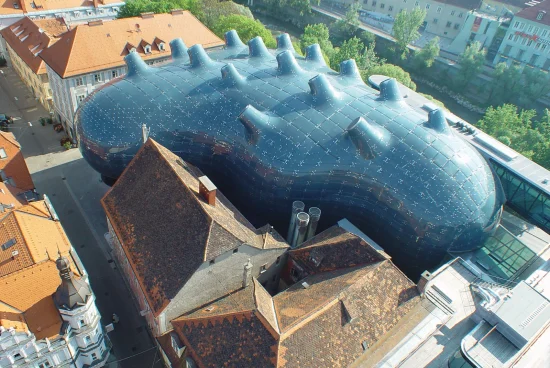
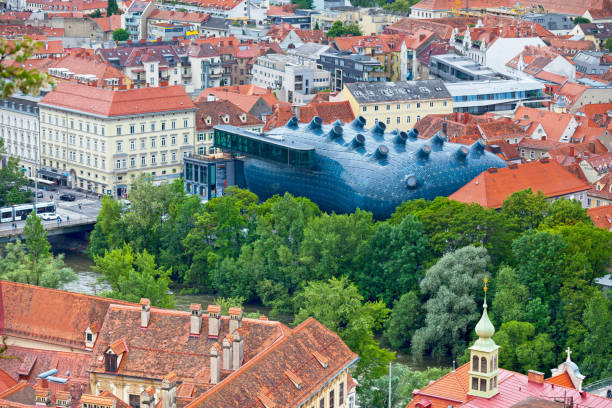
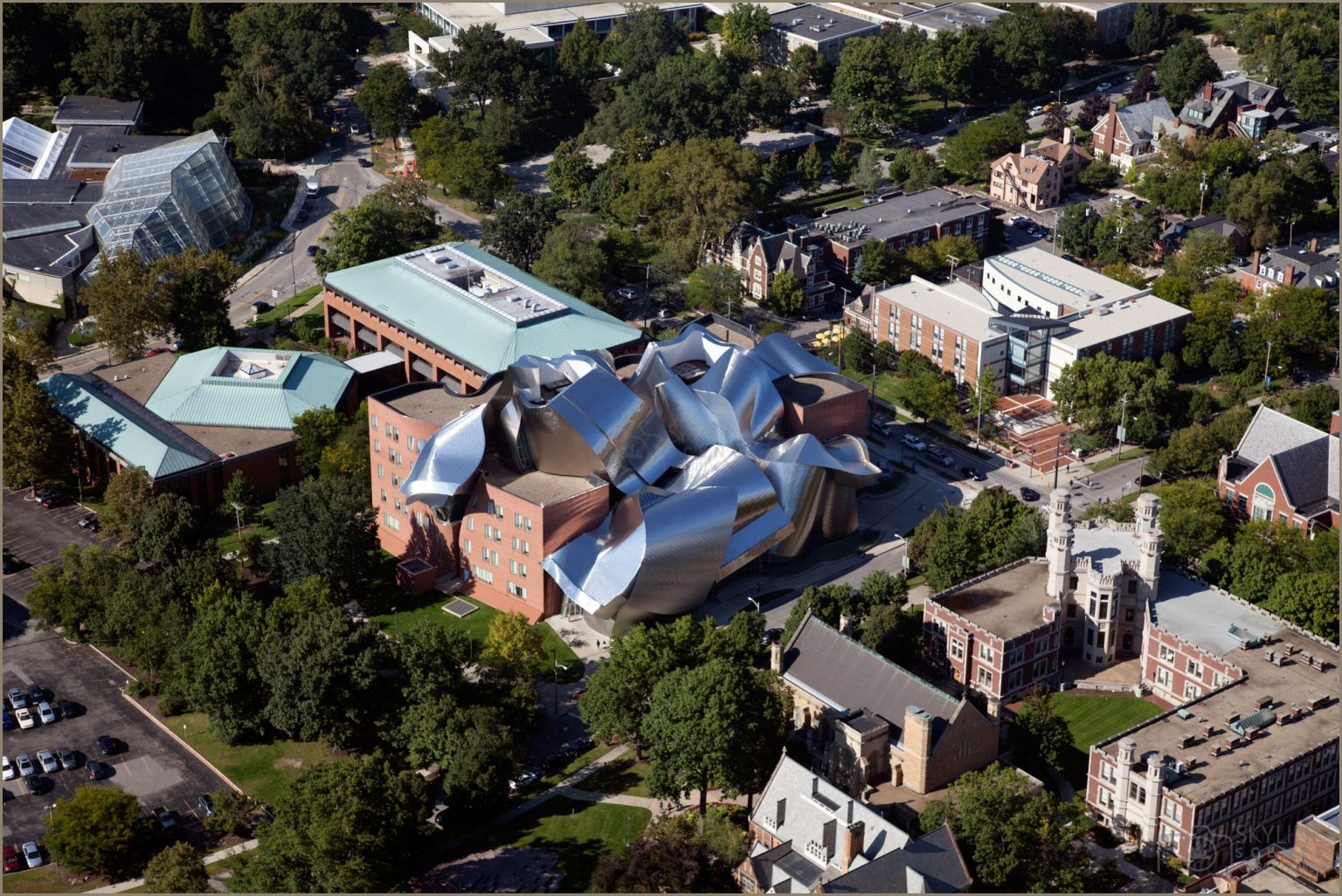
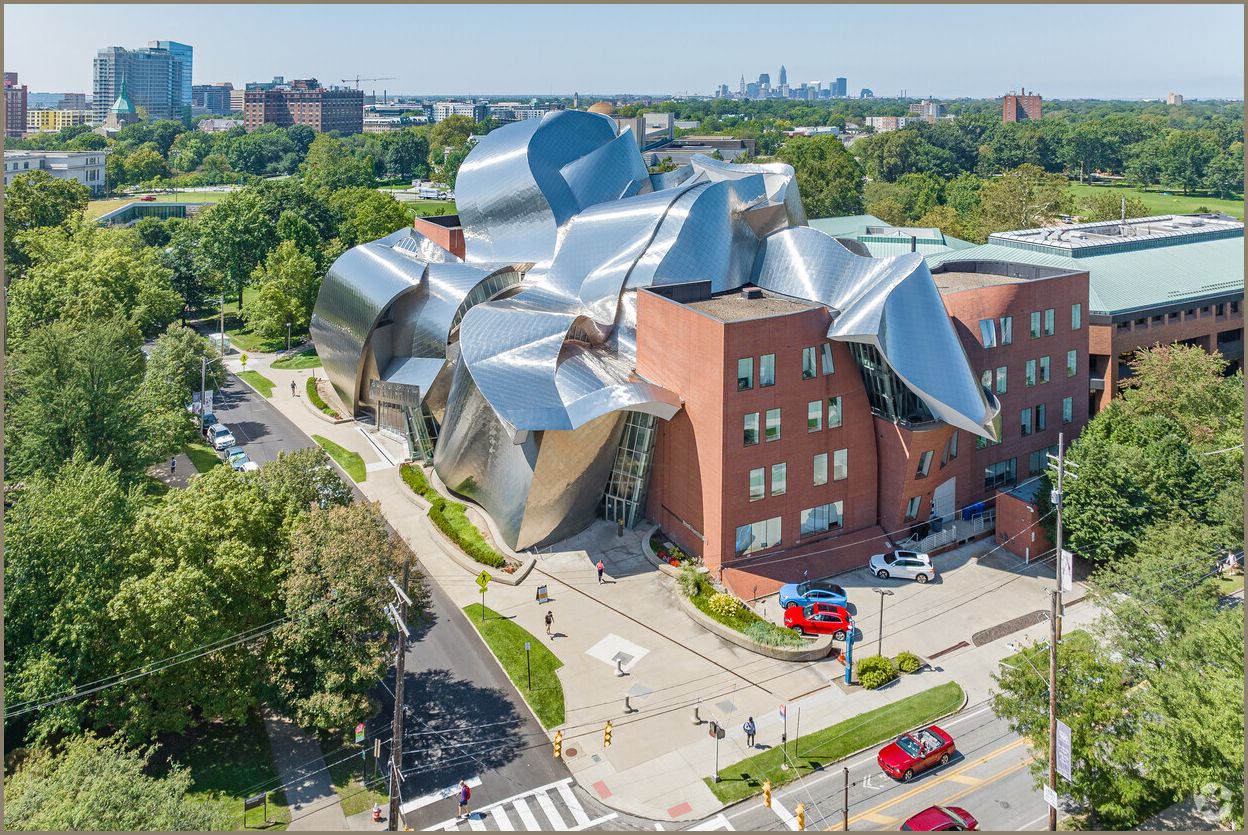
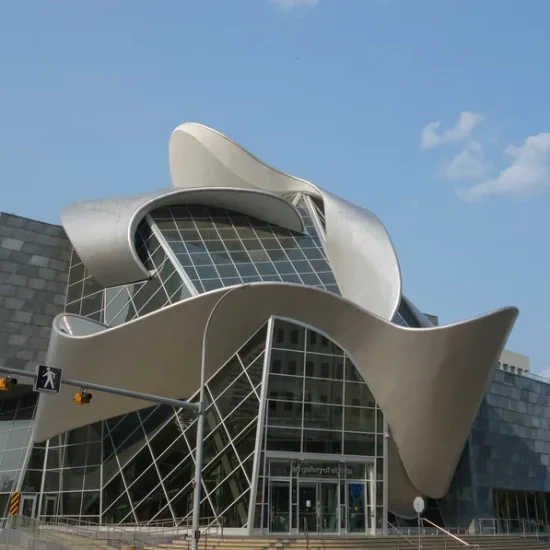

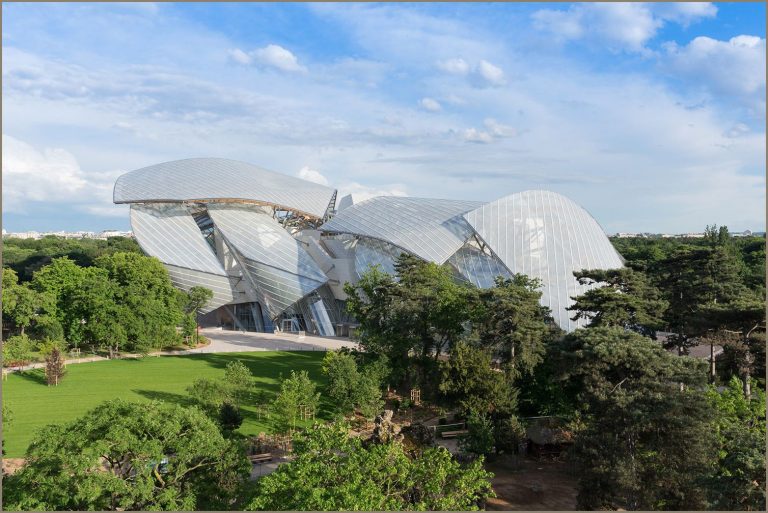
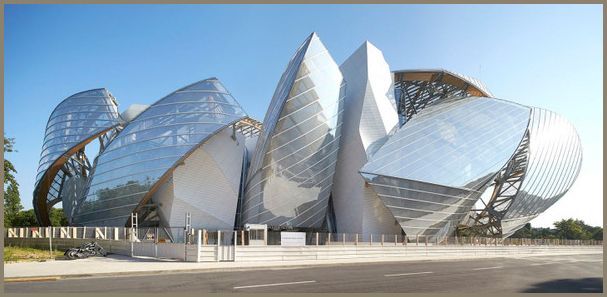

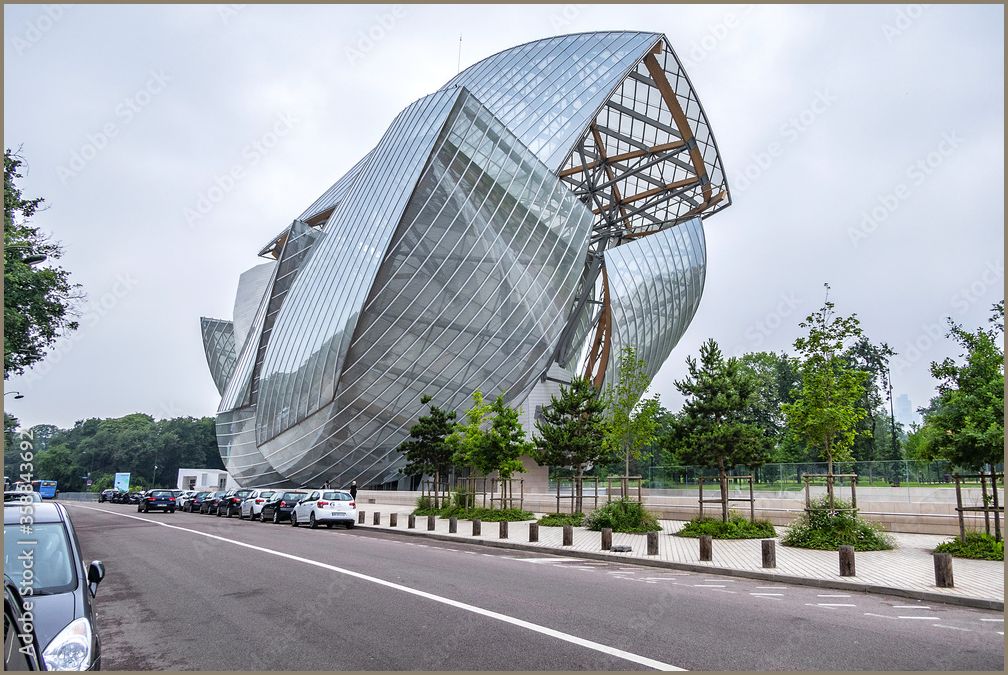
Esta página tem definitivamente toda a informação que eu queria sobre este assunto e não sabia a quem perguntar. Este é o meu primeiro comentário aqui, então eu só queria dar um rápido
(This page definitely has all the information I wanted about this subject and didn’t know who to ask. This is my first comment here so I just wanted to give a quick)
The authoritative point of view, it is tempting
pokračovat v tom, abyste vedli ostatní.|Byl jsem velmi šťastný, že jsem objevil tuto webovou stránku. Musím vám poděkovat za váš čas
Write more, thats all I have to say. Literally, it seems as though you relied on the video to make your point. You definitely know what youre talking about, why waste your intelligence on just posting videos to your blog when you could be giving us something enlightening to read?
Good day! Would you mind if I share your blog with my facebook group? There’s a lot of people that I think would really appreciate your content. Please let me know. Thank you
I agree.
Okay.
Let it be.
|Tato stránka má rozhodně všechny informace, které jsem o tomto tématu chtěl a nevěděl jsem, koho se zeptat.|Dobrý den! Tohle je můj 1. komentář tady, takže jsem chtěl jen dát rychlý
at web, except I know I am getting familiarity all the time by reading thes pleasant posts.|Fantastic post. I will also be handling some of these problems.|Hello, I think this is a great blog. I happened onto it;) I have bookmarked it and will check it out again. The best way to change is via wealth and independence. May you prosper and never stop mentoring others.|I was overjoyed to find this website. I must express my gratitude for your time because this was an amazing read! I thoroughly enjoyed reading it, and I’ve bookmarked your blog so I can check out fresh content in the future.|Hi there! If I shared your blog with my Facebook group, would that be okay? I believe there are a lot of people who would truly value your article.|منشور رائع. سأتعامل مع بعض هذه|
I agree.
Okay.
díky tomuto nádhernému čtení! Rozhodně se mi líbil každý kousek z toho a já
O conteúdo existente nesta página é realmente notável para a experiência das pessoas,
Fiquei muito feliz em descobrir este site. Preciso de agradecer pelo vosso tempo
Muito obrigado!}